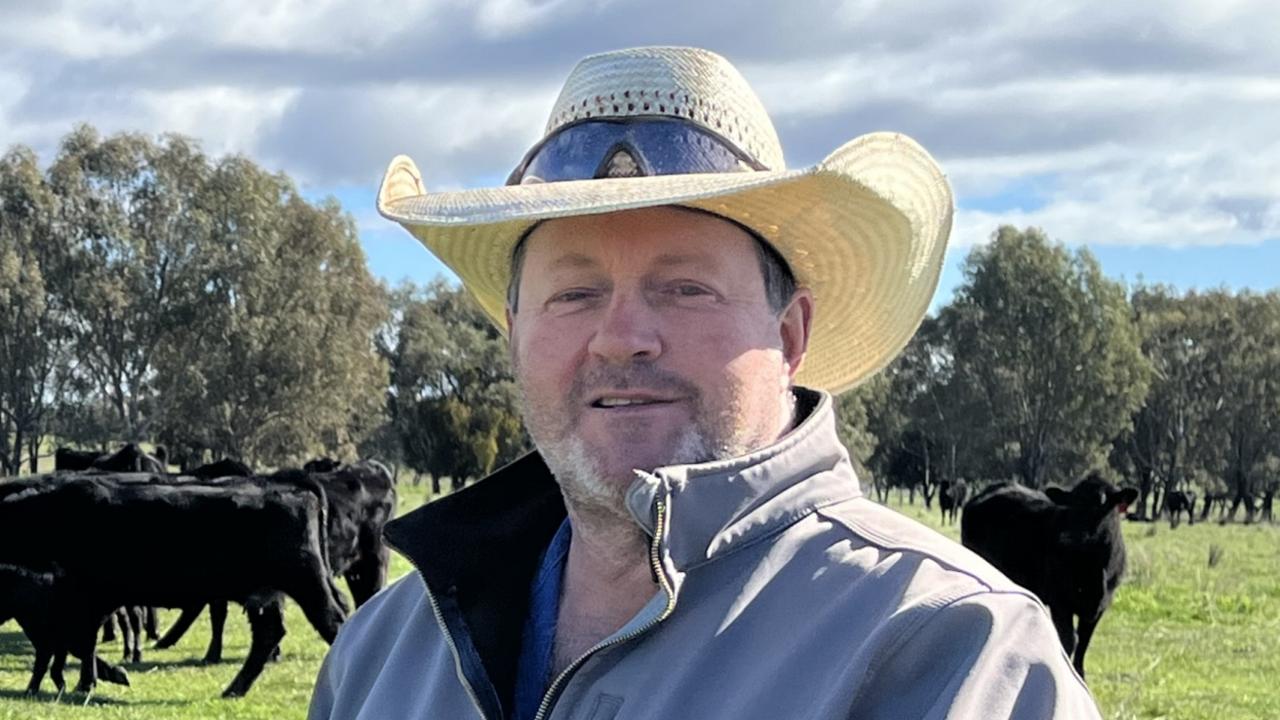Happy Beef a new branded beef venture for commercial operation in Happy Valley
HAPPY Valley cattle producers Jake and Tina Howman are delighted to be making a meal of their latest venture, writes FIONA MYERS.

HAPPY Valley cattle producers Jake and Tina Howman are delighted to be making a meal of their latest venture.
Not only have they just started selling their branded Happy Beef at farmers’ markets, they are planning to use the brand to attract attention to the quality of beef they produce.
They are optimistic but realistic: selling one beast a month through the farmers’ markets will hardly make a dent on the 600-700 cattle they turn off each year.
But they hope they will increasingly build the amount of beef they sell direct from their farm to consumers, be they restaurant operators or customers.
Jake and Tina run about 700 Angus cows on about 1000ha of leased and owned country in the Happy Valley near Myrtleford, in Victoria’s North East.
Jake returned to farming after a stint in the finance industry in Melbourne, where he worked for a major accounting company specialising at one stage in auditing books.
The numbers are something he takes pretty seriously, but when it comes to his latest farmers’ market venture, he said he doesn’t scan the figures too carefully.
“We understand there are some risks involved, but we are going slowly and carefully into what we are doing when it comes to selling our branded beef,” Jake said. “We need to do it to understand the profit margins and whether it’s worthwhile pursuing.
“But we are going softly — one beast a month is hardly going to affect our greater profitability when the majority of our cattle are still being sold as cattle.”
That’s not to say they haven’t thought carefully about Happy Beef, which is “paddock-bred and paddock-fed”.
MINCED FEAT
PRIMAL cuts are sold at the farmers’ market at Myrtleford, and mince is value-added into pies.
The cattle are killed at the Gathercole abattoir in Wangaratta, selling at the farmers’ market at about a $5/kg premium to local butcher rates.
The pies are made by a local bakery and with the figures Jake has crunched to date, are producing the biggest profit margin for the enterprise.
And while the initial cattle being killed are Angus, the Howmans have big plans already coming into fruition to try to attract attention to their Happy Beef brand.
They have ventured into Wagyus, and will this year join the entire Angus herd to Wagyus after joining a portion for the past couple of years.
Initially the progeny will be sold to store buyers, but they hope that as demand increases for their Happy Beef, the high-quality first-cross Angus-Wagyu beef will feed into their own brand.
All F1 progeny will be sold, aside from the small portion going into the Happy Beef brand from next month.
And with the kind of prices they are attracting, it is already proving to be a winner.
This spring, the Howmans sold a run of 230kg Wagyu-Angus steer and heifer weaners, 10-12 months, for 729c/kg liveweight in what is believed to be one of the highest liveweight prices achieved across Australia for F1 progeny.
Part of this was because of the careful selection of Wagyu genetics used in their herd.
BULL RUN
THE Howmans have bought several Wagyu bulls and have been particular in seeking information on the best sire lines to use with close contact with a Japanese expert on Wagyu breeding. They are also developing a breeding program to produce their own Wagyu bulls.
But their existing Angus herd had already concentrated on high levels of marbling, and that has flowed on to demand for the F1 progeny.
All heifers are joined by artificial insemination for ease of management, and some cows will also be joined this way to Wagyu because the Howmans do not yet have enough Wagyu bulls to join the entire herd naturally.
They use a blanket, fixed-time AI program achieving up to 69 per cent in calf, and back up with Wagyu bulls. There are three joinings for the herd — to maximise the use of the Wagyu bulls but also to have a flow of progeny at different ages. This, Jake said, would allow them to supply markets year round down the track.
Jake said there was no intention to retain F1 heifers in the herd for several reasons.
“We can achieve terrific prices for the F1 progeny and so we believe this is the best way to achieve maximum returns,” he said. “There is not any benefit that we can see from having F2 and F3 progeny, so what we have decided to do is sell all progeny and then buy back in Angus heifers for our replacement females.
“If we can sell a Wagyu-Angus heifer for $1600 and buy back in an Angus for $1200, then we are still better off financially doing this.
“And you are not sacrificing milk or growth when you are still doing the first cross program.”
EXIT STRATEGY
AT the back of the Howmans’ minds there is also an exit strategy away from this breeding program if the premiums disappear.
“I can’t see it happening, but if the Wagyu business does go pear-shaped, we can always swap straight back into breeding pure Angus progeny if we keep our female herd Angus,” Jake said.
Right now, they are waiting to see how their branded beef program goes and hope down the track the Happy Beef name will appear on the menus of restaurants across Australia.
“It is exciting and we believe that we are producing beef in a pristine environment and that we have the ability to tell a story around our beef,” Jake said. “These are cattle bred on our farm and never leave it except to be processed.
“The environment is spectacular, the breeding is spot on and we believe this is something that the consumer would like to buy.”


